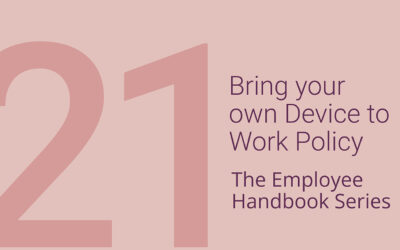Carrying out an internal investigation
If you have a difficult situation and you think you might need to investigate an employee’s misconduct, then don’t hesitate to call our HR and Employment Law team on 01284 767766 for a chat and some guidance. In the meantime, you can read the following useful guide for how to investigate an employee’s misconduct.
The Investigation
The investigation is one of the key stages of any disciplinary process because it is where you’ll find out all you reasonably can about the issue, gather evidence from all sides, see whether there might be a case to answer and help you decide what you need to do next.
- Prepare for the investigation
If you decide to investigate an issue, you should get started as soon as you reasonably can. This will minimise the impact on the effected employee and allow you to get a truer reflection of what happened as memories will be fresher.
Your first job will be to decide who should carry out the investigation. You need to pick someone who is not directly connected to the incident. But also, you need to make sure you have enough managers in reserve to chair both a disciplinary hearing and an appeal hearing. In an ideal world the manager dealing with each subsequent stage of the investigation and disciplinary process will be more senior to the one dealing with the previous stage. When you are trying to work out who you want to deal with each stage, it may help you if you work backwards from the appeal to the investigation.
- Make an investigation plan
If you plan things out, you should be able to deal with the investigation quicker and there is less chance of you missing something. This can include working out:
- What you need to investigate
- Who will be carrying out the investigation
- When you will carry out the investigation
- Who you plan to speak to
- The other evidence you intend to look at, such as CCTV recordings or emails
- How long you think the investigation will take
- Any deadlines you need to be aware of e.g., Interviewing a witness before they leave or looking at CCTV recordings (and saving them) before they are automatically deleted
- The policies you need to follow (and what you need to do to follow them)
- Tell the employee
As soon as you decide to investigate an employee you need to tell them that you are doing so. The only exception to this is if you think your employee will tamper with or destroy evidence once you tell them about the investigation. In this case you should secure the evidence first and then tell your employee. You should let them know that:
- They are being investigated
- Why you are carrying out the investigation
- Who will be conducting the investigation
- What you will be looking at
- The rough timescale
- What will happen at the end of the investigation
- Decide whether to suspend your employee
You shouldn’t automatically suspend an employee just because you’ve decided to investigate them. If you do, then it might allow your employee to resign and claim that they’ve been constructively unfairly dismissed because you have undermined the term in their contract of employment of trust and confidence.
You should only suspend an employee where you believe you need to do so to protect the investigation, your business, other employees and/or the employee being investigated. If you decide to suspend your employee, then you should:
- Explain why you’re suspending them
- Make it clear that the suspension does not mean you believe they’re guilty
- Keep the suspension confidential
- Continue paying the employee
- Continually review the suspension
- Keep the suspension as short as you can
- Explain to the employee what they can and can’t do while they’re suspended e.g. You probably don’t want them contacting other employees
- Give your employee a point of contact
- Consider the impact of the suspension on your employee and offer support if necessary
- Carry out the investigation
The form your investigation takes will vary depending on the nature of the offence you suspect has been committed. For example, if you believe your employee has been viewing inappropriate material on their work computer, then your investigation will probably focus on an analysis of their computer usage history. If, on the other hand, you believe your employee hit someone, then your investigation is likely to involve you in interviewing the ‘victim’ and any potential witnesses.
During any investigation you should try to be fair and objective and collect as much information as you reasonably can. You should try to avoid the trap of forming an idea of what happened and then only looking for evidence to support your idea. You will also want to make sure you follow any relevant policy and keep the matter confidential.
If you can keep to your proposed timetable, then you should do so. You shouldn’t let your investigation drag on, but you must also make sure it is thorough and fair.
The different types of physical evidence you might collect can include emails, computer history, receipts, phone records, CCTV recording, paperwork and attendance records. In addition, you may need to interview potential witnesses as well as the suspected employee. You can give your employees a right to be accompanied at any interview if you like, but you don’t have to during the investigation process as the statutory right to be accompanied only kicks in at the formal disciplinary stage.
You must keep a record of all the information you collect including minutes of any interviews you carry out.
- Complete the investigation
Once you have collated your information, you should prepare an investigation report. The report should set out:
- The allegations
- What you did to investigate the allegations
- Who you interviewed
- What evidence you looked at
- Your conclusions
- Your recommendations
There are a whole range of recommendations that you can make. These include:
- Taking no further action
- Offering training or coaching
- Taking informal action such as an informal discussion with the employee
- Taking formal disciplinary action
Finally, you need to let your employee know what the outcome is. You can do this verbally, but you should always follow up in writing so that you have a good paper trail.
We offer HR and Employment legal services to businesses of all sizes across Suffolk, Cambridgeshire, Norfolk, Essex and London.
Contact our team today to find out more on the services we offer our business clients on 01284 767766.





